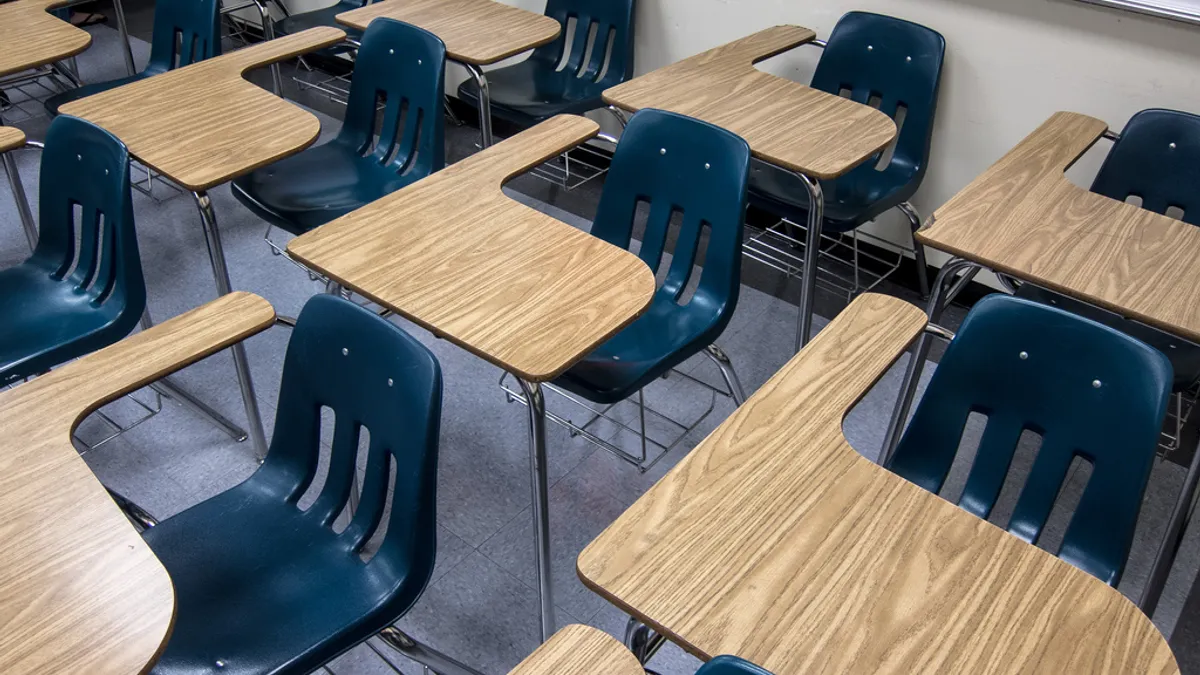Dive Brief:
- Educators at Greenwood College School, a nonprofit independent school serving grades 7-12 in Toronto, ON, experimented with classroom models to offer more personalized learning opportunities, finding that a co-teaching model produced favorable outcomes, Executive Director of Information and Learning Technology Jonathan Tepper writes for eSchool News.
- In one example provided, the school placed 10th and 11th grade math classes in the same larger, more flexible space, with each maintaining its own teacher — and the results provided more opportunities for unique student groupings, greater ability for more advanced students to forge ahead, and more one-on-one support for all students.
- Among other takeaways, Tepper writes that providing clear data following the restructuring of classrooms helped earn parental buy-in, teachers were inspired to improve, and students' perceptions of teachers grew stronger and more favorable overall.
Dive Insight:
As schools work to provide students with more personalized learning opportunities and a more active learning environment overall, the traditional classroom model will have to undergo seismic shifts. This can be a frightening prospect for administrators and teachers in the U.S., however, as stringent accountability standards have often served to dissuade educators from experimenting with new approaches. After all, it's likely safer to teach students to the test and hope for the best — especially when that test might be tied to evaluations that determine the future of your employment or the entire school — than it is to overhaul everything and try something new that might work.
There has been hope that some of the leeway expected under the Every Student Succeeds Act will enable that sort of experimentation by taking away some of the harsh consequences that could potentially be faced should an effort fail, but how that works out post-implementation remains to be seen.
Still, that hasn't stopped some schools and districts in the U.S. from making moves similar to those at Greenwood. Teachers at Orchard Lake Elementary in Lakeville, MN, for example, earned the support of their superintendent when they wanted to experiment with a model that would provide more personalized learning and teacher collaboration with less top-down decision-making. What resulted was a pilot program that has grown since 2013 to include the entire school, placing all 34 teachers in three "vertical, K-5 communities" where walls have been knocked down for open class environments that allow students to work in their "right fit" group regardless of grade level.
For schools and districts still on the fence about experimentation, looking to models that have already worked elsewhere for best practices can provide a more comfortable jumping-off point.







 Dive Awards
Dive Awards



